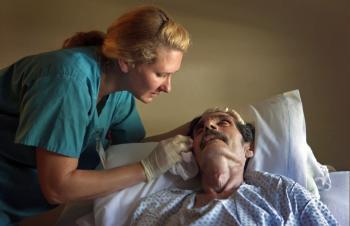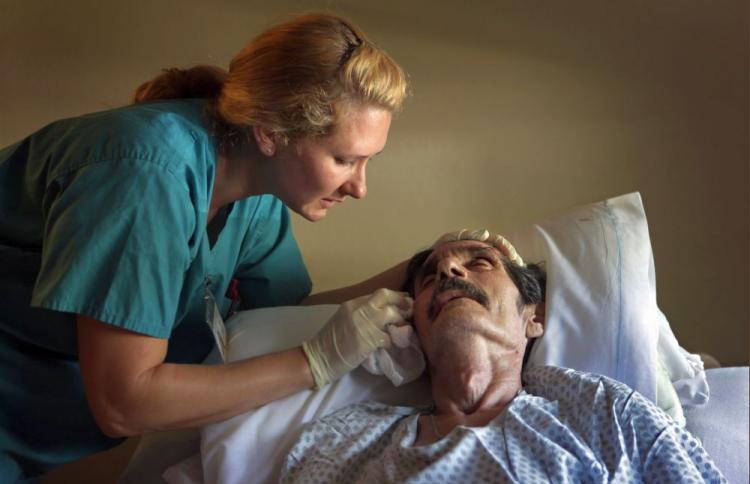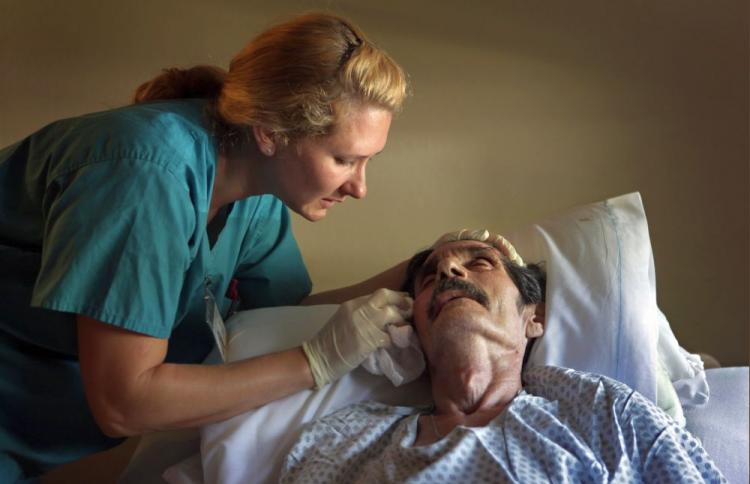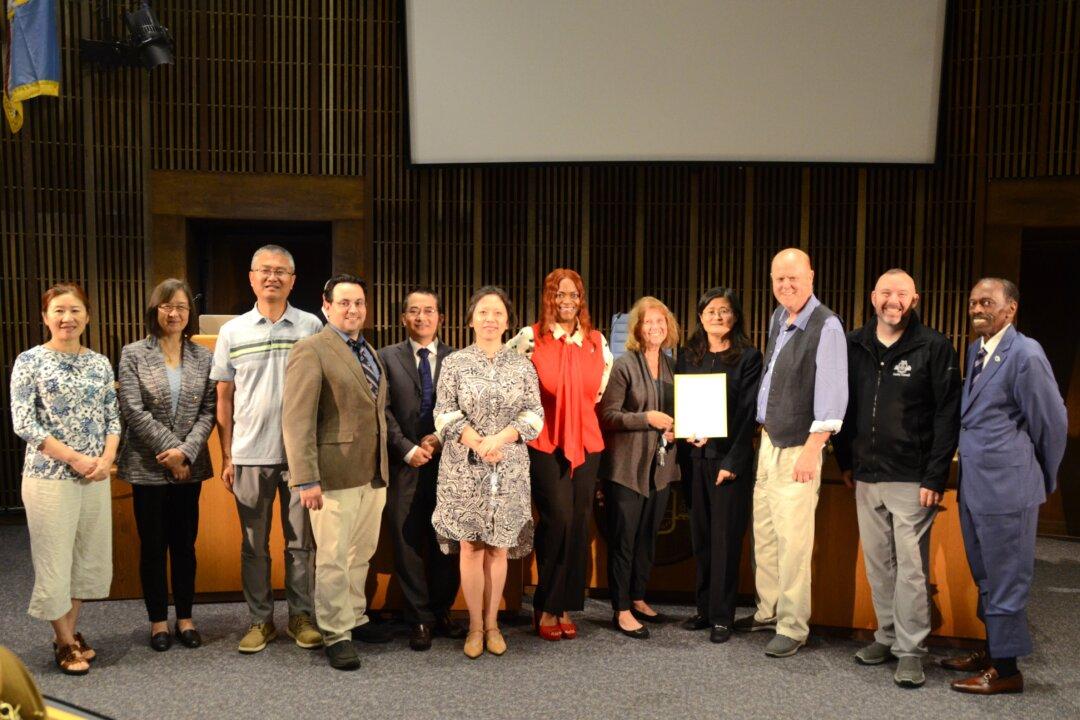Aging Populations Boost Nursing Jobs
Aging baby boomer population is resulting in nursing becoming one of the fastest growing professions in the United States.

Registered Nurse N. Von Reiter comforts Ramond Garcia as his health quickly declines at the Hospice of Saint John on August 20, 2009 in Lakewood, Colorado. Nursing becoming one of the fastest growing professions in the US. John Moore/Getty Images
|Updated:





